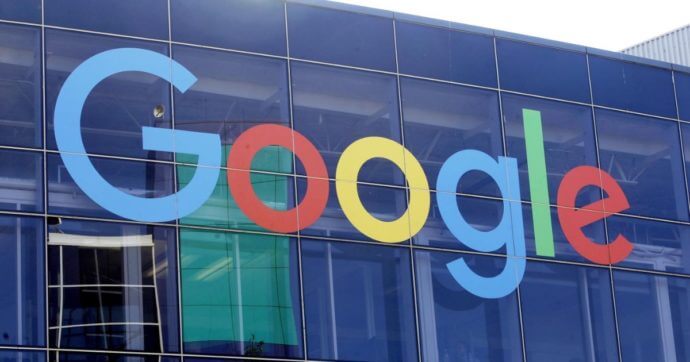
This article has been written by James Sibi, pursuing the Diploma Programme in M&A, Institutional Finance, and Investment Laws (PE and VC transactions) from LawSikho.
Table of Contents
Introduction
Google and its parent company Alphabet have spent a lot of money on the acquisition of new products and companies over the last two decades. Even before it was a common name, Google has used these acquisitions to grow its manpower and introduce new products. Google has acquired over 180 different companies throughout the years. They have spent more than 24.5 billion dollars on their top ten acquisitions alone. That may be a lot of money, but Google has always found a way to make the best out of it.
The search engine has acquired a wide range of businesses, technologies, and services including mapping technology, security systems, devices, robots, video games, facial recognition software, and much more. This practice has currently become the standard procedure for Silicon Valley tech companies.
In 2003 Google acquired Applied Semantics, a company that provides domain name, contextual advertising, and enterprise search solutions. This acquisition was a game-changer in the way the internet evolved. Acquiring Applied Semantics led to huge revenue growth from the advertisement which is now the highest income source for Google.
What was the aim of the acquisition?
The acquisition of Applied Semantics was intended to improve the company’s ad search and internet advertising programmes. The core business concept of Applied Semantics is the development of software that is sold to companies to help categorise and summarise articles.
Adwords are the advertisements that appear below and above your Google search results, and Adsense, a product of Applied Semantics, allows Adwords to appear on websites and take a piece of their revenue. In comparison to the acquisition of YouTube and Android, it appeared to be a dull and ordinary acquisition, but Adwords and Adsense combined resulted in a billion-dollar company making it one of the 15 biggest tech acquisitions of all time. Now, most of Google’s research work is supported by Applied Semantics. Google would be a completely different company without this acquisition.
What does Applied Semantics do and does it benefit users?
Applied Semantics was established in 1998 as Oingo by Adam Weissman and Gil Elbaz, who wanted to make computers more “human literate.” Using their skills in information technology, design, database program design, software development, and speech recognition, the duo collaborated to create a modern design. They co-created the company’s most advanced technology, CIRCA (Computer Interactive Reminiscence and Conversation Aid), with a group of linguists and software developers which acts as the standard design for all Applied Semantics’ services. The products of Applied Semantics are focused on its patented CIRCA technology, which recognises, organises, and derives information from websites and databases in a way that simulates human thought and ensures more efficient data extraction. AdSense technology analyses original website content, while Google technology only analyses URL/Weblog data. To identify and collect key ideas from a website, AdSense utilises its CIRCA technology, while Google relies entirely on usage trends and habits, which are often inaccurate.
AdSense can recognise vague words, while Google does not. Google has no particular screening mechanisms while AdSense has sophisticated screening technologies. Google acquired applied semantic when it was only four years old and specialised in software that understands and derives data from websites. AdSense, a product of Applied Semantics, would further deliver advertisements to websites by specific keywords which are related to the site. Now, the company uses similar technology to analyse expressions and interpret the meaning of news stories to connect ads relevant to the context. For the last four years, the company claims to have had a team of ten linguists working on what it considers to be the biggest ontology database, with over 1.25 million words and tens of millions of word associations. To that end, AdSense helps in automating the task of scanning news stories and inserting them in the appropriate advertising categories. This technology is mainly based on one concept. Specific keywords are forwarded to the paid-listing services, and the top advertisers are forwarded to AdSense, where those advertisers are added to particular posts.
Applied Semantic receives approximately 500,000 unique interactions each month across its domain-name network and a click-through rate of 50% on most of its listings. The company receives payments from advertising links and distributes the funds with itself and its commercial advertiser. Applied Semantics initially had about a hundred users. Through its AdSense technology, it has joined the online advertisement market. AdSense uses search algorithms to decipher the meaning of a Web page in relation to keywords. For example, it can analyze the context of an article or a blog post on a website so that it can be paired up to a keyword about that particular topic rather than inserting an advertisement on a random matter.
Has it turned out to be a smart investment?
At the time of Applied Semantics partnering with Overture, Google’s competitor, Google announced this to provide contextual marketing to USA Today, the San Francisco Chronicle, and the New York Post. Overture stated that Applied Semantics was not one of its top ten affiliates anymore and that the transaction would have no “material effect on revenue”. They also made a statement that Google’s decision to open an office in Southern California would not hurt its recruitment announcement.
Now that Google has purchased Applied, Overture may have to find another partner. At the same time Google said it was buying Applied, Overture warned that earnings this year will be half what the company originally expected. Overture’s decision to lower the bar was due to expectations of higher traffic acquisition costs and a slower-than-expected take-up rate for advertisers to pay for keyword searches.
Overture had to find another partner as Google has acquired Applied. Around the same time as Google announced its acquisition of Applied, Overture cautioned that the profits of that year would be less of what the firm had expected. Overture’s decision to lower the bar was motivated by the increased traffic acquisition costs and a comparatively poor rate of advertisers paying for keyword searches. In July 2003, three months after Google purchased Applied Semantics, Yahoo! paid $1.63 billion for Overture.
Did it improve the company’s core business?
Google stated that the products and engineering team of Applied Semantics would improve search and advertisement programmes made by Google, including its rapidly growing advertisement offering based on the contents. Which allowed Google to expand its technical footprint and recruitment activities in the Southern California area.
The advertisement side of Applied Semantics’ business was the subject of Google’s announcement and the one with more media coverage. It was Google’s biggest attraction. Business products and domain names of Applied Semantics were lost in the way. Although these could be less profitable for both parties than advertising, Google continued to expand on these services as well. This purchase would allow Google to develop new solutions that make online ads more useful to users and advertisers alike,” Brin, co-founder of Google said. The brain was right about Applied Semantics. It turned out to be one of the most successful purchases Google has ever made. AdSense has now become the cash cow of the search engine giant.
Applied Semantics representatives said AdSense is superior to other paid listings solutions in several ways. Presumably, these improvements will soon be added to Google. According to Applied Semantics, AdSense outperforms other listing options in many ways. These enhancements were added to Google subsequently.
How profitable has this acquisition turned out to be?
The acquisition of Applied Semantics was one of the most expensive in 2003, which was about 102 million USD. Over two years, Adsense accounted for about 15% of Google’s sales. Applied Semantics, which was created in 1998 and has just under 50 workers, claims to have been profitable over the past four years. Now, AdSense generates over $15 billion for Google, which is around 23% of its total revenue.
Google made a presence in Southern California where it plans to attract young tech talent. Overture also had a presence in the city. Its headquarters in Pasadena, California, was just thirty miles from Applied Semantics in Santa Monica. Google trying to hire talented engineers from the area they would no longer relocate them to, that is the northern part of the state, helped them to cut the competition with Overture.
Conclusion
Google merged two of its assets, data collection, and online advertising liquidity. AdSense displays ads on your webpage that are important to your searches based on matching words from the searches. The $102 million price tag might have seemed steep at the time, but it proved to be a drop in the bucket once the Applied Semantics team built AdSense — the paid search advertising platform that today makes up the majority of Google’s revenues. Acquiring a large company with fifty members, specialised in semantic text processing did not sound lucrative at that time but it was one of the best acquisitions Google has ever made 102 million dollars might have looked a bit too steep but Adsense is one of the most revenue-generating platforms for Google. It is also important to note the huge competitive advantage this acquisition gave to Google against other rival companies especially against Overture.
Students of LawSikho courses regularly produce writing assignments and work on practical exercises as a part of their coursework and develop themselves in real-life practical skills.
LawSikho has created a telegram group for exchanging legal knowledge, referrals, and various opportunities. You can click on this link and join:
 Serato DJ Crack 2025Serato DJ PRO Crack
Serato DJ Crack 2025Serato DJ PRO Crack



 Allow notifications
Allow notifications
